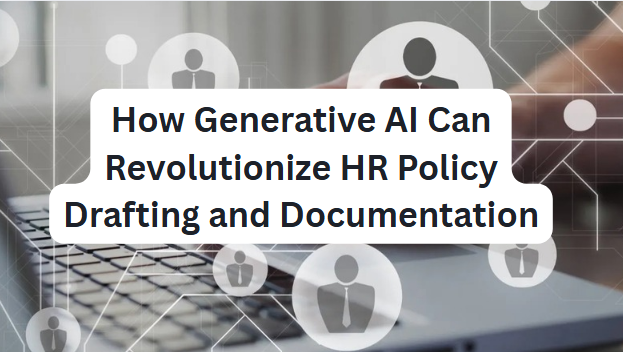
In a world where workplace policies must keep pace with fast-changing regulations, employee expectations, and business strategies, the human resources (HR) department faces increasing pressure to deliver precise, up-to-date documentation quickly. Traditionally, policy drafting has been a time-consuming and resource-heavy task that requires legal insight, collaboration across departments, and regular updates. Enter Generative AI — a powerful tool that is poised to transform how HR teams approach policy creation and documentation.
The Traditional Challenges of HR Policy Drafting –
Creating HR policies involves a blend of legal compliance, organizational culture, and clear communication. HR professionals must often sift through complex regulatory language, align with leadership directives, and ensure documents are understandable and inclusive. Moreover, each time there’s a change in law or company structure, policies need to be revisited, redrafted, and redistributed. This manual process is not only time-intensive but also prone to inconsistencies and delays, which can lead to compliance risks or employee confusion.
What Is Generative AI and Why It Matters in HR –
Generative AI refers to artificial intelligence systems capable of generating text, images, code, and other forms of content based on user inputs. In the HR context, this technology can assist in producing policy drafts, employee handbooks, job descriptions, and more, by leveraging large language models trained on a vast range of human language patterns. Generative AI goes beyond basic templates — it understands context, tone, and structure, allowing HR teams to generate tailored content in minutes rather than days.
Key Benefits of Using Generative AI for HR Documentation –
The primary benefit of using generative AI in HR is efficiency. AI tools can generate first drafts of policies almost instantly, significantly reducing the time spent on initial writing. This allows HR professionals to focus more on reviewing and refining rather than starting from scratch. Second, generative AI ensures consistency in tone and formatting, which is crucial for building trust and clarity in HR communications. Another major advantage is compliance — AI can be trained to reference up-to-date legal frameworks and standards, helping teams stay aligned with current regulations. Finally, the technology supports customization, allowing policies to be adapted quickly for different departments, regions, or employee types.
How HR Teams Can Implement Generative AI Effectively –
To harness the full potential of generative AI, HR teams should start by identifying the types of documents that are most time-consuming or repetitive, such as leave policies, remote work guidelines, or onboarding documents. Next, select a reliable AI tool that offers customizable outputs and strong data privacy controls. It’s also critical to define internal workflows that combine AI-generated drafts with human oversight to ensure legal accuracy and alignment with company culture. HR leaders should involve legal, compliance, and communications teams to establish approval protocols and quality checks.
Challenges and Considerations –
While generative AI offers numerous advantages, it’s important to acknowledge potential limitations. AI-generated content may lack the nuance required for certain legal or culturally sensitive documents, making human oversight essential. There’s also the risk of overreliance — teams may be tempted to accept outputs at face value without thorough vetting. Data privacy is another key consideration, particularly when using AI tools that handle employee information or internal policies. Therefore, organizations must choose AI providers with strong security standards and transparent data usage policies.
Conclusion –
Generative AI is not here to replace HR professionals — it’s here to empower them. By automating the most tedious parts of policy drafting and documentation, AI allows HR teams to focus on strategic initiatives like employee engagement, organizational development, and diversity and inclusion. As technology continues to evolve, early adopters of generative AI in HR will gain a competitive edge through faster, more consistent, and more adaptable documentation processes. The future of HR lies in collaboration between human expertise and intelligent automation — and that future has already begun.

